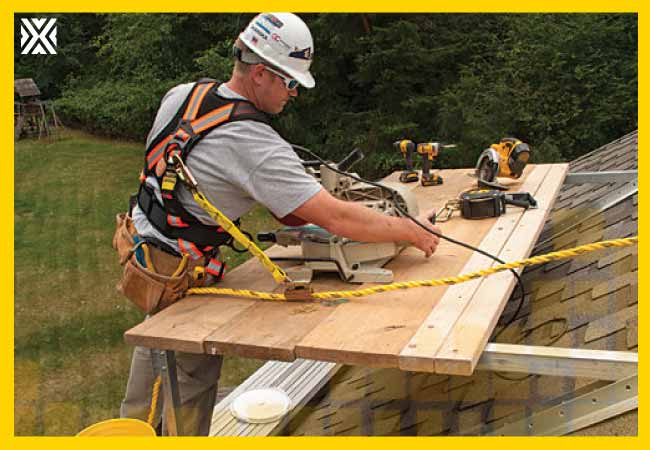Currency
October 04, 2020

Falls from height are a leading cause of construction worker fatalities.
In 2018, falls accounted for 320 of the 1,008 construction fatalities. In the residential building industry, protecting workers comes down to mitigating or eliminating fall hazards before work begins and providing as safe a working environment as possible.
“When it comes to worker fall protection, we either keep workers safe or experience injuries and fatalities, there is no in between,” says Jeremy Bethancourt, CHST, a safety engineering consultant with Augspurger Komm Engineering Inc. and safety director at LeBlanc Building Co. Inc. “Fall protection is an active way for an employer to ensure that workers are kept safe even if they violate safety procedures or simply make a mistake.”

Bethancourt urges those involved in residential construction to remember the three points identified in OSHA’s Fall Prevention Campaign:
● Plan ahead so that worker safety is taken into account before a job begins
● Provide workers the equipment they need to stay safe
● Train workers on how to use equipment safely
He also emphasizes that fall protection must be a two-way street between employers and workers. Employers must provide workers the equipment they need, train them on how to use the equipment, how to recognize and mitigate hazards and verify that they understand the training. Workers must use the tools and training provided and report any hazards before they can cause harm.
“As safety professionals, one of our responsibilities must be to engage with those who are planning a job to ensure that fall protection and worker safety is planned into the job.” he says. “You have to look at the different fall protection systems and find something that is going to work.”
Testing fall protection equipment and/or systems in different circumstances with static and dynamic loads before they are used is one effective approach. Testing allows you to observe how the equipment or system performs in different scenarios to determine whether it is suitable for the structure being worked on and will provide an appropriate level of protection for workers.
Employers have several options for preventing falls, including guardrail systems, safety net systems and personal fall arrest systems. Bethancourt stresses that, if at all possible, you want to remove the need for personal protective equipment and use a passive system to mitigate or eliminate hazards before the work begins.
“When it comes to worker fall protection, we either keep workers safe or experience injuries and fatalities, there is no in between,” says Jeremy Bethancourt, CHST, a safety engineering consultant with Augspurger Komm Engineering Inc. and safety director at LeBlanc Building Co. Inc. “Fall protection is an active way for an employer to ensure that workers are kept safe even if they violate safety procedures or simply make a mistake.”

Bethancourt urges those involved in residential construction to remember the three points identified in OSHA’s Fall Prevention Campaign:
● Plan ahead so that worker safety is taken into account before a job begins
● Provide workers the equipment they need to stay safe
● Train workers on how to use equipment safely
He also emphasizes that fall protection must be a two-way street between employers and workers. Employers must provide workers the equipment they need, train them on how to use the equipment, how to recognize and mitigate hazards and verify that they understand the training. Workers must use the tools and training provided and report any hazards before they can cause harm.
“As safety professionals, one of our responsibilities must be to engage with those who are planning a job to ensure that fall protection and worker safety is planned into the job.” he says. “You have to look at the different fall protection systems and find something that is going to work.”
Testing fall protection equipment and/or systems in different circumstances with static and dynamic loads before they are used is one effective approach. Testing allows you to observe how the equipment or system performs in different scenarios to determine whether it is suitable for the structure being worked on and will provide an appropriate level of protection for workers.
Employers have several options for preventing falls, including guardrail systems, safety net systems and personal fall arrest systems. Bethancourt stresses that, if at all possible, you want to remove the need for personal protective equipment and use a passive system to mitigate or eliminate hazards before the work begins.









